It is not only one of the most visited museums in the world, as well as the most visited museum in Spain, with some three million people visiting its halls each year: the Prado Museum in Madrid is home to one of the world’s largest collections of ancient art, as well as the most comprehensive collection of Spanish art in existence, it is a regular destination for many Madrileños as well as an important research institute, active in a variety of fields, from conservation to digital. It was November 19, 1819, when the Prado opened to the public, first under the name Real Museo de Pintura y Escultura, then from 1868 Museo Nacional de Pintura y Escultura and finally, finally, Museo del Prado. The neoclassical building that houses the collection had in fact been built during the time of King Charles III on the site where a large meadow (“prado” in Spanish) once stood: it had been designed in 1785 by architect Juan de Villanueva (Madrid, 1739 - 1811) to house the natural history collections of the Spanish royals.
When the Prado opened in 1819, the exhibition consisted of 311 paintings, although the Spanish kings had granted as many as 1510 works from royal residences to the institution. The collections of the kings of Spain had begun to form in the 16th century during the time of Charles V and were continuously enriched by all the kings who succeeded him. Some of the greatest masterpieces found in the museum, from Bosch’s Garden of Delights to Velázquez’s Las Meninas, from Rubens’s Three Graces to Andrea Mantegna’s Transit of the Virgin, from El Greco’s Horseman with his hand on his chest to Giulio Romano’s Pearl, are owed to the collecting of the kings of Spain. Other works, however, arrived after the museum’s opening thanks to acquisitions made with the express purpose of enriching the collection, or through donations: the Prado, moreover, is a very active museum in this sense and its collections are always expanding, even with masterpieces of great value, such as Francisco Goya’sHannibal the Victor, the first documented work by the Spanish painter, purchased in 2021 by the Fundación Amigos del Museo del Prado for 3.3 million euros and then donated to the museum.
The Prado’s collection has more than twenty thousand works (more than seven thousand paintings, more than eight thousand drawings, about five thousand prints, and a thousand sculptures), and more than a thousand are exhibited in its buildings (the Prado, in fact, spans four structures: the Villanueva building, which is the main headquarters; the Claustro de los Jerónimos; the Casón del Buen Retiro (the latter is home to the Centro de Estudios del Prado, the museum’s research institute in which the library, conservation and restoration department, archives, and documentation center are located); and the administrative building on Calle Ruiz de Alarcón. These are also joined by the Salón de Reinos of the Palacio del Buen Retiro, which houses a portion of the collection: the renovation project of the Salón, functional to make it suitable to house the works, bears the signature of architect Norman Foster, who was commissioned for the project in 2016. All together they form the Campus del Prado, the complex of buildings officially created in 1995 with the aim of modernizing the museum and expanding its exhibition spaces.
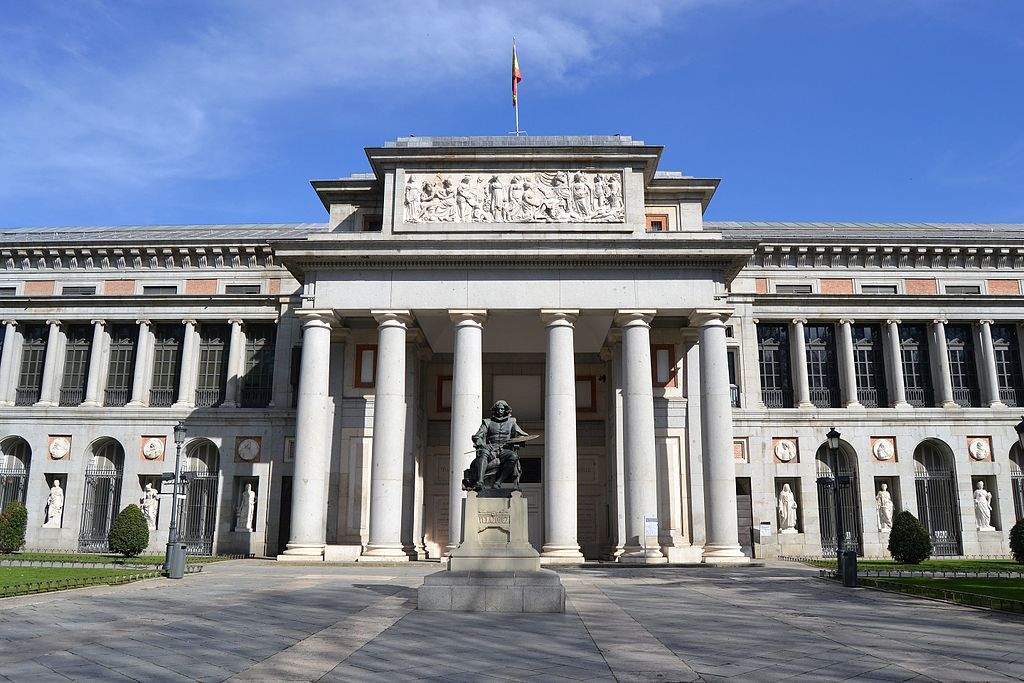 |
| The Prado Museum |
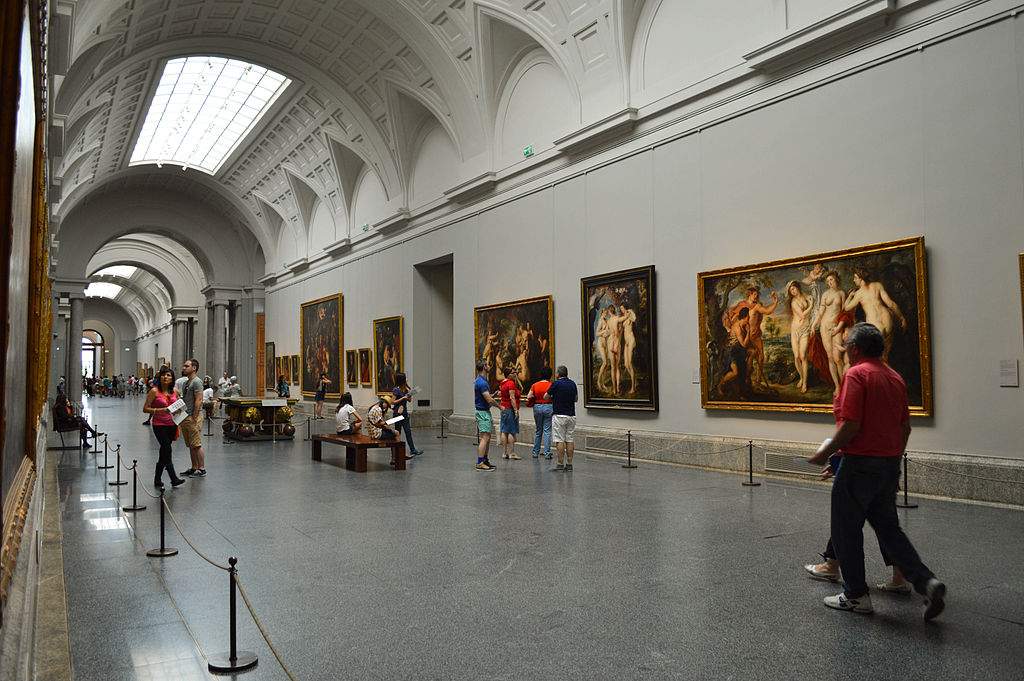 |
| One of the Prado’s galleries |
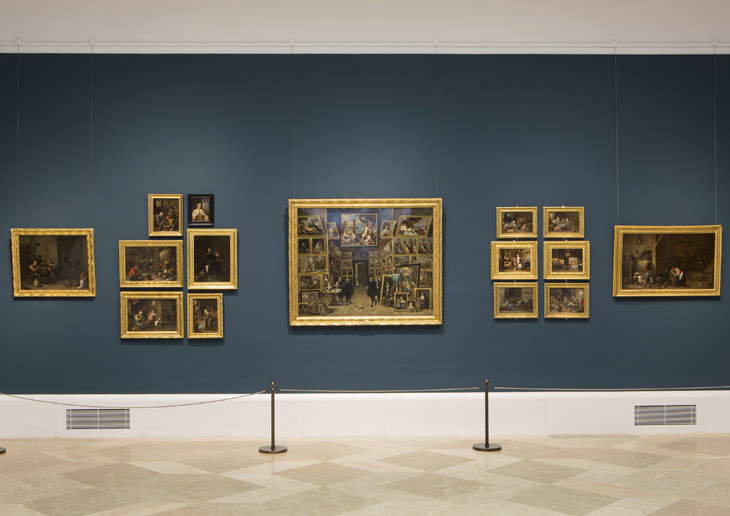 |
| Hall of the north wing |
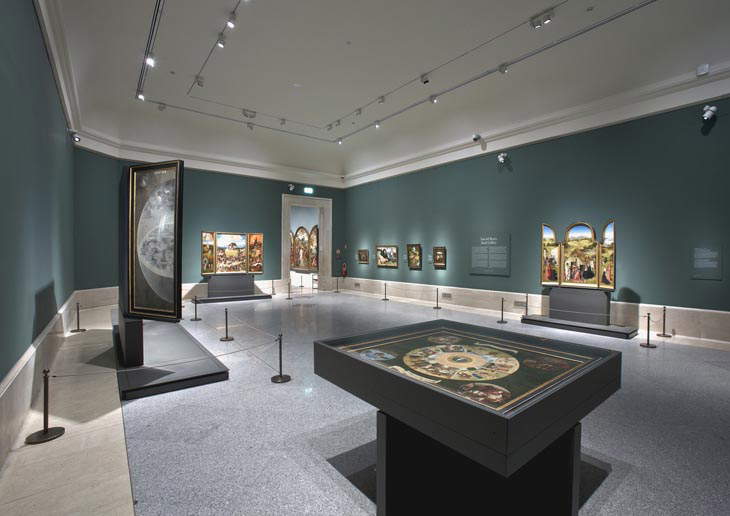 |
| The Bosch Hall |
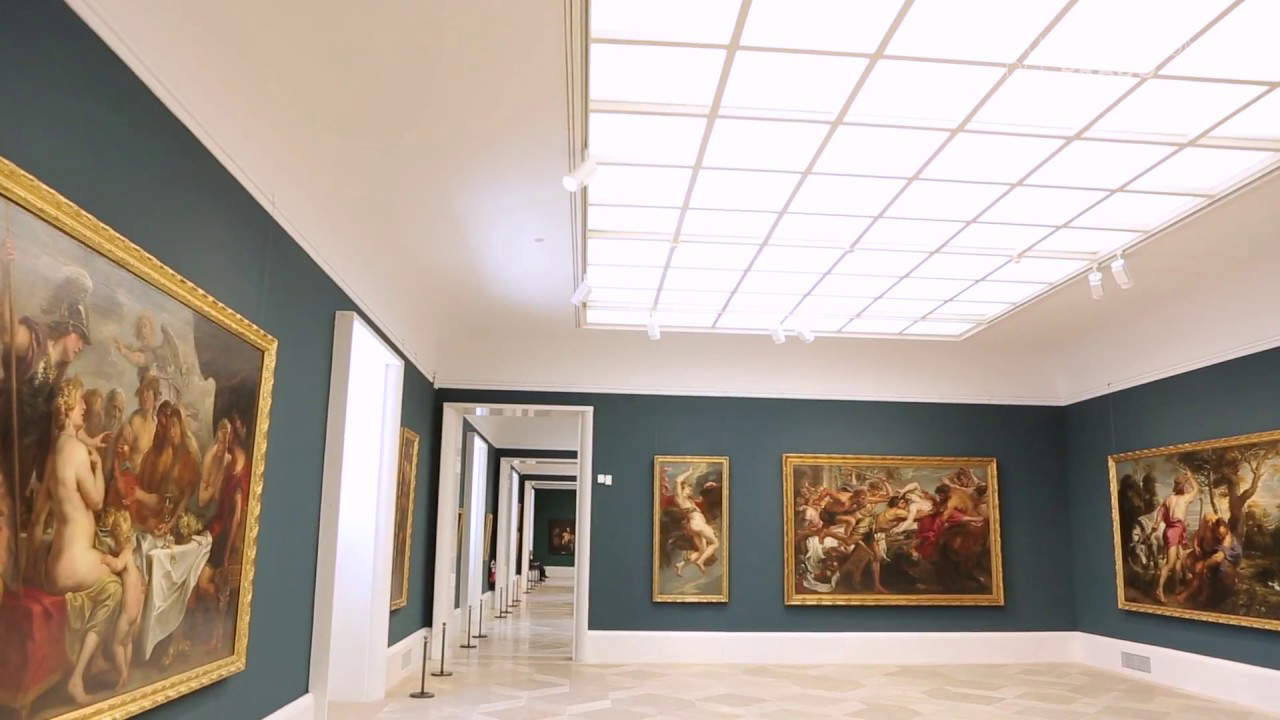 |
| The Flemish halls |
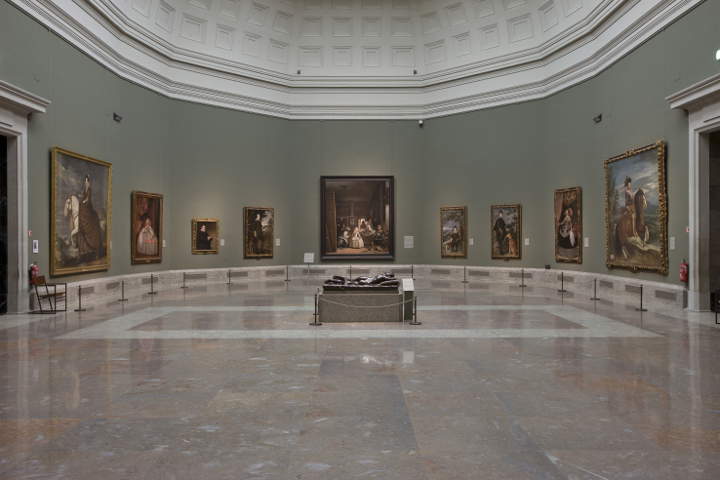 |
| The hall of Velázquez |
There are six main collecting nuclei: Spanish painting; Italian and French painting; Flemish painting and the northern schools; 19th-century painting; the graphics section; and sculpture and decorative arts. The Spanish painting nucleus is the one with which the Prado opened its doors in 1819 and, like the nuclei devoted to the various schools, reaches back to the early nineteenth century: the idea was to open the museum to allow the public to learn about Spanish painting. The nucleus allows for a fairly complete idea of the development of painting in Spain: there are works by all the great Spanish painters from the 12th century to the early 19th century, such as Juan de Flandes, Pedro Berruguete, Luis de Morales, Juan de Juanes, El Greco, José de Ribera, Diego Velázquez (of the latter artist, the Prado has 48 works, or about 40 percent of his known output), Francisco de Zurbarán, Alonso Cano, Esteban Murillo, and Francisco Goya (with 130 works). Spanish painting occupies as many as 43 rooms, which follow a chronological order, although some authors, because of their proximity to other schools, are exhibited in sections that are not focused on Spain (this is the case, for example, of Ribera).
The collection of Italian painting includes masterpieces by Beato Angelico, Antonello da Messina, Sandro Botticelli, Andrea Mantegna, Titian, Veronese, Tintoretto, Raphael, Federico Barocci, Caravaggio, Annibale Carracci, Guercino, Guido Reni, Luca Giordano (the latter, moreover, worked in Madrid for King Charles II from 1692 to 1702, and in the Casón del Buen Retiro one can see a large fresco of his from 1697 depicting theApotheosis of the Spanish monarchy). As for Flemish painting, the Prado holds such a masterpiece as Rogier van der Weyden’s Deposition in addition to works by Robert Campin, Hans Memling, Gerard David, Jan Gossaert, Pieter Bruegel, Pieter Paul Rubens, Jacob Jordaens, Antoon van Dyck, and the aforementioned Garden of Delights by Bosch, whose other important works the museum also has, such as the Triptych of the Adoration of the Magi, the Seven Deadly Sins, and the Triptych of the Hay Wagon. The fact that the Prado has such an important nucleus of Bosch’s rare works is due to the fact that King Philip II was a great Bosch collector who was very passionate about the Dutch artist. The Flemish core has about a thousand paintings: much smaller, but no less interesting, is the German collection, which includes four works by Albrecht Dürer, including one of his self-portraits, and works by Lucas Cranach the Elder. The 19th-century collection includes works by the greatest Spanish artists of the time, from Goya to Francisco Pradilla, Mariano Fortuny to Joaquín Sorolla. Finally, the sculpture collection also has about a thousand works, with particularly interesting pieces from the medieval and Renaissance periods.
The Prado is also a museum that places a huge emphasis on education, with numerous programs reserved for children and adults, students and teachers, as well as the community of citizens. “We believe that the Museum of the 21st Century,” the museum says, “is a powerful context for social action, so we collaborate with people with specific needs and with audiences that traditionally have not been reflected in the museum, making it an inclusive and participatory place for the whole community.” Insights into individual works or artists, themed tours (e.g., on women, food, and so on), projects to enhance diversity, online activities, programs for migrants or the differently abled, and so on. A museum that, in short, never ceases to surprise, to innovate, and to inspire so many other institutions around the world.
 |
| The Prado in Madrid, the museum born from the collections of the kings of Spain |
Warning: the translation into English of the original Italian article was created using automatic tools. We undertake to review all articles, but we do not guarantee the total absence of inaccuracies in the translation due to the program. You can find the original by clicking on the ITA button. If you find any mistake,please contact us.